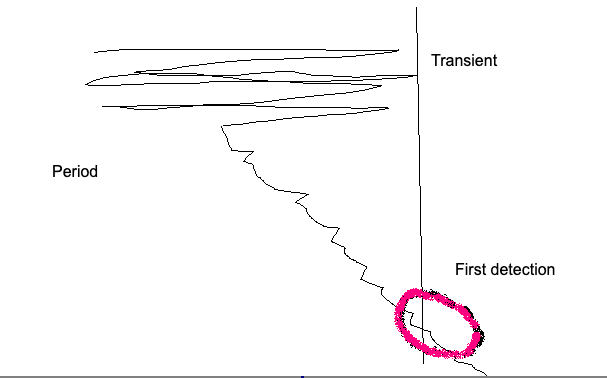Note: I do not claim necessarily anything new and some people have done a lot of work on Skelet’s machines, including Dan Briggs.
By looking a bit at individual Skelet’s machines I realise that some of them are “just” [Decider] Translated cyclers which are currently still undecided because they need bigger a time threshold that what we’ve used so far in order to be detected. They have relatively big “S” and “P”, with the notation of https://groups.google.com/g/busy-beaver-discuss/c/lcr_6buFz_8 where “P” is the size of the period and “S” the time to wait before the period begins.
So here they are the 7/43 Skelet’s machines that were found to be Translated Cyclers (hypothesis verified by running the decider individually on the machines with 10,000,000 time threshold and 500,000 memory threshold):
- Skelet’s machine 2, S = 15,171 and P = 4,328
- Skelet’s machine 5, S = 15,179 and P = 4,328
- Skelet’s machine 6, S = 24,265 and P = 4,328
- Skelet’s machine 14, S = 4,839 and P = 91,995
- Skelet’s machine 18, it is decided already by [Decider] Backward reasoning, S = 6,220 and P = 1,143
- Skelet’s machine 22, S = 5,237 and P = 91,995
- Skelet’s machine 25, it is decided already by [Decider] Backward reasoning, S = 6,399 and P = 589
Unless I have a bug of course, I found it striking that different looking machines all achieve S = 24,265 and P = 91,995 its seems to resonate with some results on 4 states machines shown in https://groups.google.com/g/busy-beaver-discuss/c/lcr_6buFz_8. (guess what, I had a bug in my reporting of P and S, I corrected it and now, values are mostly different except for P = 4,328 but machines’ diagrams look similar.)
However, we notice that these P and S are still quite small compared to the results for 4-state machines given in https://groups.google.com/g/busy-beaver-discuss/c/lcr_6buFz_8. We expect that there are some 5-state machines with way bigger P and S, which makes us wonder about the completeness of Skelet’s list.
You can reproduce these results by running bbchallenge-deciders/decider-translated-cyclers at main · bbchallenge/bbchallenge-deciders · GitHub witht the test command:
go test -run TestSkeletMachines -v
I have not updated the status of these machines to Decided because there are so few of them. They will get decided later when we run [Decider] Translated cyclers on the entire remaining database with high thresholds (will do it when we get to let’s say < 200,000 machines left to decide).
